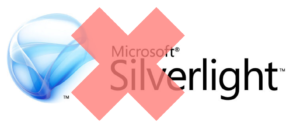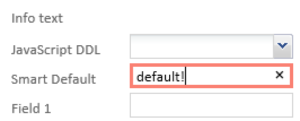I was excited to join Kofax’ Agile Academy here in Vienna. There were many questions I had: would there be many others in EMEA working (and struggling) with Kofax TotalAgility? What is everyones level of experience, how many projects did they use KTA in? I ended up being positively surprised. There is a large group of knowledgeable people, most of them experienced, but still not seasoned veterans. Still – my expectations for the training were already fulfilled on day one: I found my community of practice.
After a full week of intense hands-on including a hack-a-thon where we were able to pick and present our own topics I learned quite a lot – this article will list my (personal!) top seven items from the Academy, a very high-quality workshop held by Kofax’ Chris Maertz, Richard Haine and Michael Schechter.
1. We are not alone
I can’t stress it enough, but it was reassuring to meet so many others that have already worked with KTA in real-life applications. While there’s no official community of practice the Kofax LinkedIn Users and Developers group at LinkedIn is probably the best place to get involved. Kofax also reassured us that this group is actively monitored (as opposed to the long-dead official forums).
2. Silverlight will die

October 2021 marks the official end of support for Microsoft Silverlight. From this day on we won’t get any fixes from Redmond, even of there’s a potential zero day exploit being discovered. The good news is: naturally, Kofax being aware of that, works on a replacement for the Designer. The bad news: there’s neither any official ETA nor any information about whic technology we can expect. I’ve heard rumours of html5, buy as said – this is not official. Yet, I think that a purely web-based solution is the most logical conclusion.
While migrating Silverlight to a WPF solution potentially could be less of an effort, that would mean going back to where Singularity already was: a rich-client based application. Let’s hope Kofax will also upgrade to the latest versions of Ext JS, the JavaScript framework used for controls as well.
3. Learn and use JavaScript!

While there is no official documentation available, JavaScript can make all the difference when building user-centric forms. KTA includes Ext JS as the underlying JavaScript framework and jQuery as an additional library – so, if you are looking for any documentation, check out the respective docs first. I will try to cover JavaScript in an additional post as there’s just too much to write about.
In case you don’t know where to start, Code School offers two great courses and the first level for jQuery is free.
- JavaScript Tutorial (free, from w3schools)
- JavaScript Tutorial (paid, from Code School)
- jQuery Tutorial (first course free, from Code School)
4. Kofax still is bad at naming their products

This is not about KTA directly but rather Kofax Analytics, their Data warehouse/Business Intelligence solution. Besides from offering a fully-blown BI solution, Kofax offers smaller, dedicated solutions tailored for their other products. For example, there is Kofax Analytics for Capture. As the name suggests, KAFC is a BI solution for Capture only. It will give you insights about the current state of your ecosystem, and provide historic data – such as batches processed, fields extracted, minutes per module taken.
In the past they only allowed you yo use KAFC on an as-is-basis, and while you were able to create your own views, deriving custom metrics from KC’s very own database (sic!) required a dedicated license called Kofax Insights for Capture. Yep, that’s right: they called it Insights (I see what you did there, Kofax). You would get additional insights into your Capture system using custom metrics. Yet, the product’s former name itself was Insight (without the s). Confused already? Well, at least they ditched that craziness, but only to top it.
So, if Kofax Analytics for Capture is a BI solution for your whole KC/KTM system, then Kofax Analytics for TotalAgility would allow you to gain insights into your KTA system, right (you remember they ditched KIAFC)? Something such as how many jobs ran, how long each activity took, et cetera? Well, that’s not the case: KAFTA allows you to monitor Multi-Channel-Capture-related metrics only. I’m very much surprised about that, as Kofax themselves always tried to position KTA as being much more than just a replacement for KC/KTM, yet KAFTA only will let you gain insights into MCC. So, if you want full Insights into your KTA system: there’s a different license for that, and guess what: it is called Kofax Insight Analytics for Total Agility (KIAFTA). Update 2017-05-17: as Chris pointed out, KIAFTA is no longer offered and has been rebranded to Document Process Intelligence which leaves us with three different products:
- Analytics for TotalAgility (which offers insights into MCC metrics, only),
- Document Process Intelligence (which includes the first product and allows you to include additional data sources),
- Full-blown Insight.

5. SPAs are KTA’s real strength
This one’s difficult to swallow for every partner coming from the capture world: KTA is much more as just a replacement for KC/KTM. Naturally, we compare it to what we know and what we’ve worked with the past years. Knowing all the shortcomings of KTA regarding Multi-Channel-Capture: if we only look at this aspect we fail to see what KTA potentially could do for us, being a full-blown BPM suite. And most of Kofax’ other products integrate – some more, some less – nicely into KTA. It’s a paradigm shift for all of us, and that includes sales.
6. Working Categories!

Laugh all you want, but I did not know that: you can assign a user a working category. From that moment on all elements created will be assigned that category automatically – any process, form, groups – you name it. That’s incredibly useful when building a new process for a new customer – you can neatly group things together. While I was using categories in the past, I always moved newly created elements into a category manually (and only naturally forgot to do that every once in a while). No more: working categories got you covered.
7. Jobs versus Cases
I already had a discussion about this a few months ago on LinkedIn, and the Academy reinforced my views. Here’s my flow chart regarding using either:
- The Process is generic, must be reusable, and has only automated activities -> use a Business Rules
- The Process is generic, must be reusable, contains manual activities -> use a Business Process (to be reused as a sub process);
- The Process is specific -> use a Case or Case fragment.
Conclusion
If you’re working with KTA and have the opportunity to join the Agile Academy, do it. Not only will it help you gain additional insights (no pun intended) into the platform, but help you connect with others. I’m still amazed by the quality of the workshop and the effort Kofax put into this. It is reassuring to know that they still seem to value their partners quite much, given all that fuzz and acquisitions over the last couple of years.